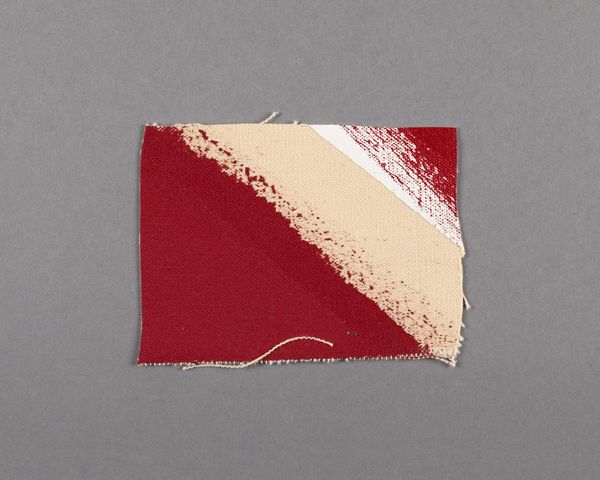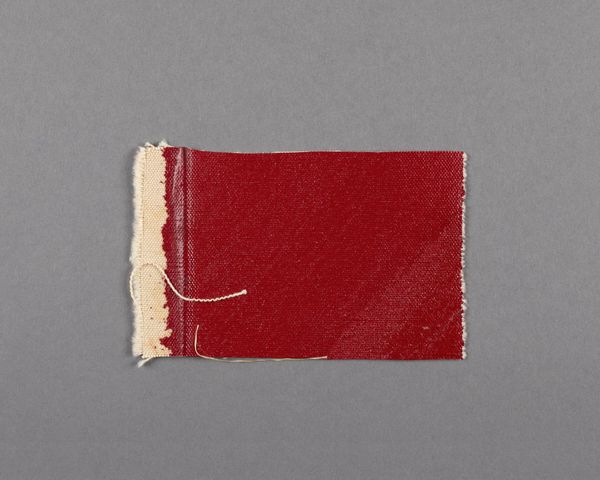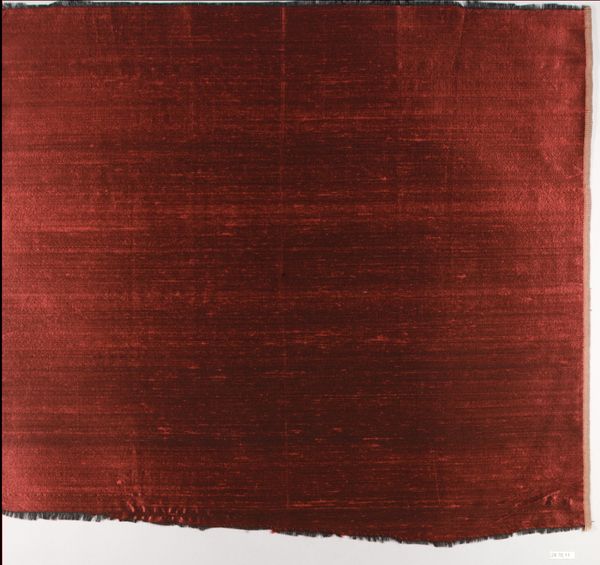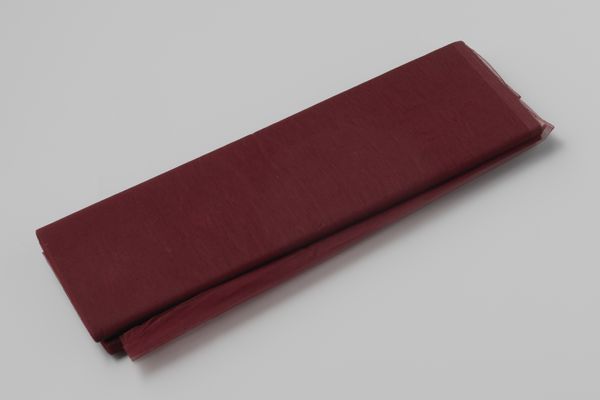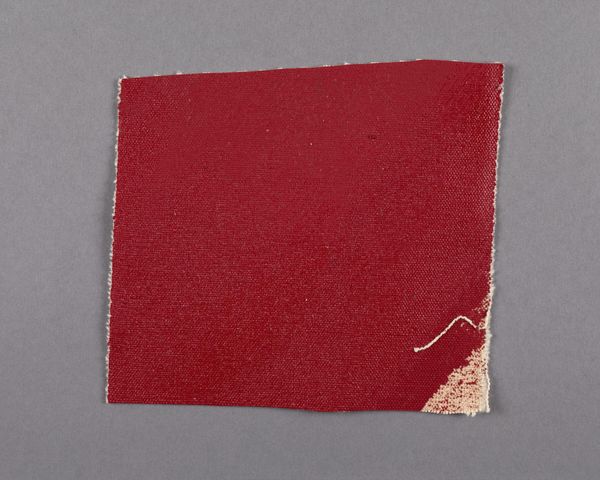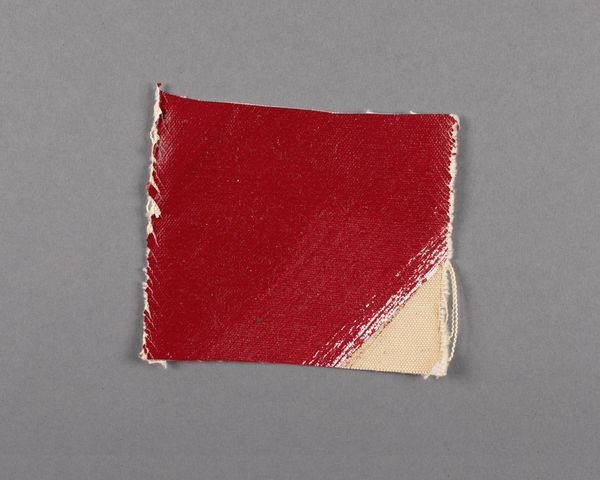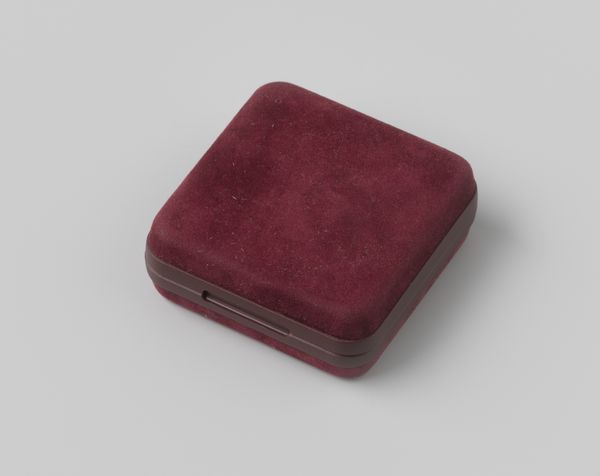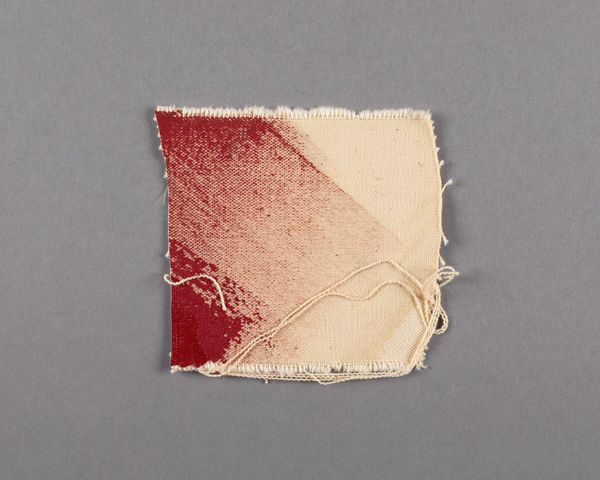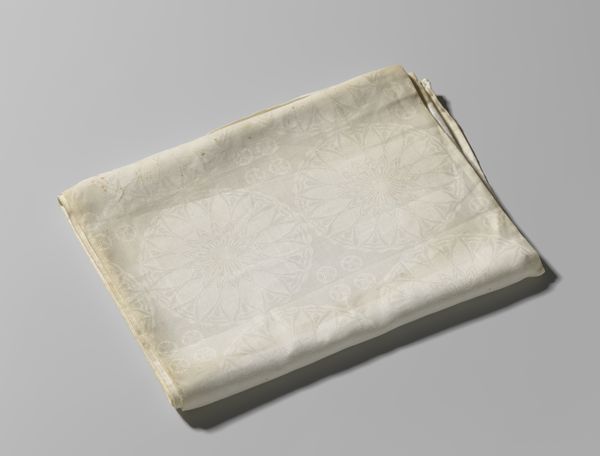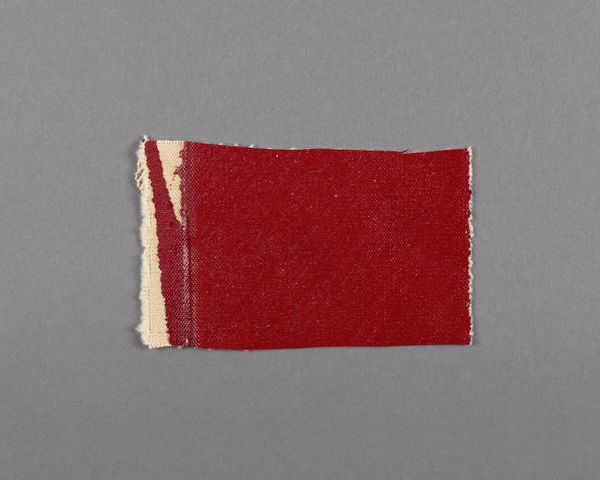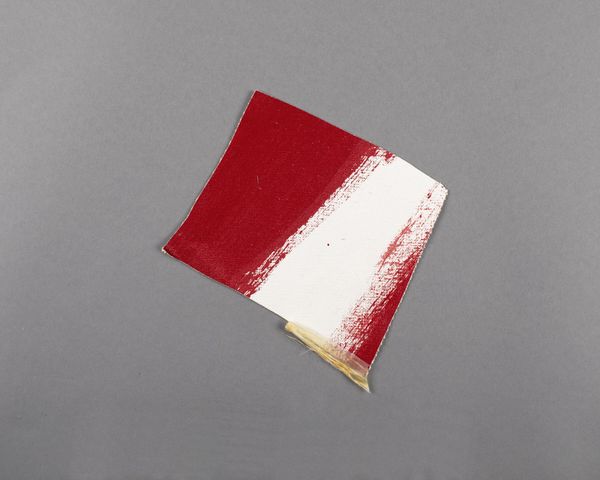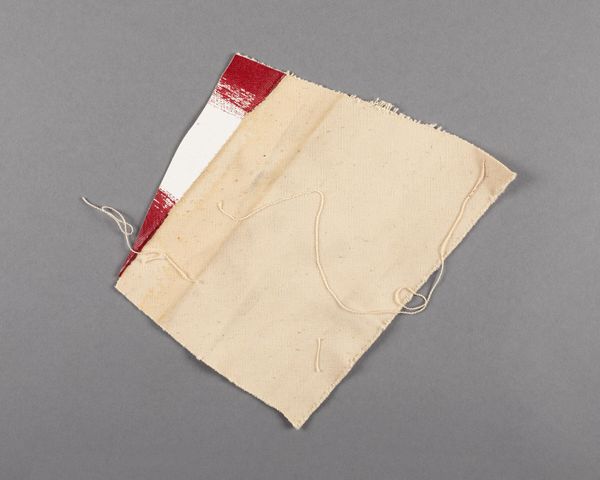
textile, photography
#
still-life-photography
#
textile
#
photography
#
product photography
Dimensions: width 10 cm, length 15.5 cm, width 15.1 cm, height 2.5 cm
Copyright: Rijks Museum: Open Domain
Curator: Gustav Schnitzler, the artist behind this artwork, captured "Karton met wijnrood lint van gaas," or "Cardboard with Wine Red Mesh Ribbon," around 1900. It resides here at the Rijksmuseum. Editor: My first impression is of quiet luxury. There’s a simple elegance in the combination of textures and the subtle layering. I also wonder about the labour to produce the textile in the first place and how that intersects with photography as labour itself. Curator: Exactly. The work is deceptively simple, but laden with considerations of how material objects are valued. It's essentially a photograph of humble materials elevated to art. And, beyond the art, one should recognize how deeply enmeshed textiles are to class. For instance, sheer, dyed fabrics were for so long inaccessible. This, in itself, creates meaning here. Editor: That tension between accessibility and preciousness is compelling. I also wonder if there is significance to cardboard itself. What it means to depict it within a "fine art" context of early photography. As the cardboard fades away so must have a myriad of individuals, particularly workers. Curator: And the mesh ribbon, what's now seemingly discarded, could’ve been a potent symbol. Its crimson hue, suggestive of wine or perhaps even blood, can evoke notions of celebration but also, quite bluntly, histories of exploitation. Thinking about who gets to create art, and who creates the materials is a vital political question. The still life form, and its placement on aged cardboard suggests temporality. Editor: I hadn't quite picked up on the implication of discarded elements and social history through the textile production here, and the class elements this reveals. Considering those elements elevates my reading quite a bit. The photographic treatment grants this transient combination a newfound longevity, asking the viewer to confront what is preserved and how. Curator: Indeed. It’s a dialogue about class, value, and the nature of art itself, carefully mediated through the lens. Editor: Well, by bringing together social production and an artistic interpretation, this discussion underscores the complexity embedded in simple material arrangements. Thanks, I learned something here.
Comments
No comments
Be the first to comment and join the conversation on the ultimate creative platform.
